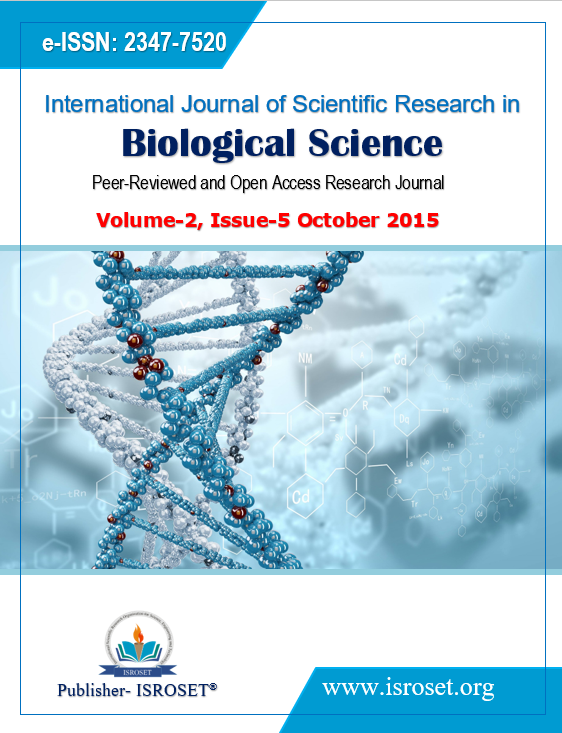Genetic study of advance breeding lines of soybean under Excess Monsoon Rainfall condition in Kymore Plateau zone of Madhya Pradesh
Keywords:
Soybean, Mutant Lines, Varieties, GenotypesAbstract
Soybean is the principal oilseed crop in India contributes 43 % oilseeds and 28 % edible oil production in the country. Rainfall and temperature are most important factors influencing the crop yield of soybean (Reddy, 2014). In recent years soybean productivity has been turn down due to impact of alteration in rainfall and climate. Prolong excessive rainfall in Madhya Pradesh rose major trouble to the growth and productivity of soybean. In kharif 2013, early and excessive monsoon rainfall occurred in M.P. and total rainfall recorded in Jabalpur from June 2013 to Oct 2013 was 2400 mm. Present experiment was carried out comprising of 50 promising soybean breeding lines sown during kharif 2013 in RBD with three replications at Seed Breeding Farm, JNKVV, Jabalpur, M.P. Observations were recorded for phenological traits & fourteen morphological traits. Statistical analysis revealed that seed yield per plant have highest phenotypic (PCV) and genotypic coefficient of variation (GCV) followed by number of pod per plant, number of seeds per plant. High heritability with high genetic advance was found for number of pods per plant, seed yield per plant biological yield per plant For tolerance to high and excessive rainfall, fifteen soybean breeding lines viz., JS 97-52, JS 95-60, JS 20-29, JS 20-34, JS 20-41, JS 20-50, JS 20-69, JS 20-71, JS 20-75, JS 20-82, JS 20-89, JS 20-98, JS 20-99, JSM 207 and JSM 302 were identified, these all have shown fair yield under excessive rainfall conditions.
References
Aditya, J.P., Bhartiya P and Bhartiya A (2011). Genetic variability, heritability and character association for yield and component characters in soybean [G. max (L.) Merrill]. J. of Central European Agri., 12(1): 27-34.
Karad, S.R., Harer P.N., Kadam D.B. and Shinde R.B. (2005). Genotypic and phenotypic variability in soybean [Glycine max (L.) Merrill]. J. of Maharashtra Agril. Univ., 30(3): 365-367.
Nigam D., Khare D. and Shrivastava A.N. (2012). Excessive moisture tolerance in soybean. Soybean Research. J., 10: pp 1-10.
Reddy S.I.V (2014). Impact of climate change on soybean production. SOYCON 2014, Soybean Research J., pp 203.
Shrivastava, M.K. and Shukla R.S. (1998). Genetic analysis for yield and its components in soybean under different environments. Crop Res. (Hisar), 16(2): 196-201.
Parameshwar, M. G. (2006). Genetic investigations in soybean [Glycine max (L.) Merrill]. M.Sc. (Ag.) Thesis, University of Agriculture Sciences, Dharwad.
Excess Monsoon Rainfall Raise Concerns for India’s 2013/14 Soybean Productivity, USDA http://www.pecad.fas.usda.gov/cropexplorer, www.sopa.org
Downloads
Published
How to Cite
Issue
Section
License

This work is licensed under a Creative Commons Attribution 4.0 International License.
Authors contributing to this journal agree to publish their articles under the Creative Commons Attribution 4.0 International License, allowing third parties to share their work (copy, distribute, transmit) and to adapt it, under the condition that the authors are given credit and that in the event of reuse or distribution, the terms of this license are made clear.







